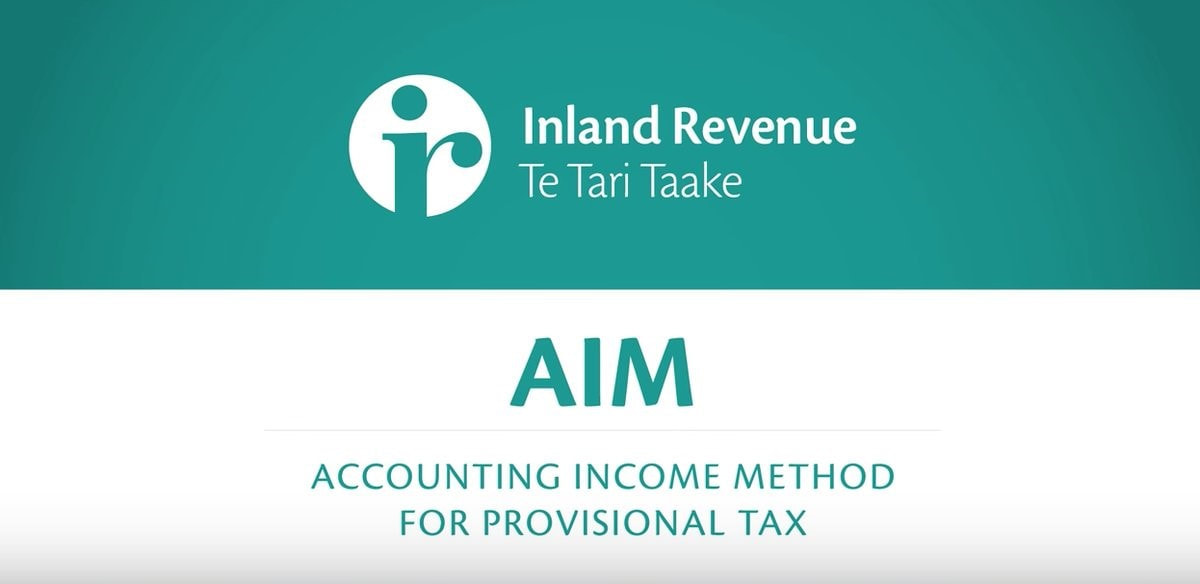 UHY Haines Norton Manager Paul Eckford explains why the Accounting Income Method for provisional tax could be a good option for small businesses struggling with managing cash flow.
UHY Haines Norton Manager Paul Eckford explains why the Accounting Income Method for provisional tax could be a good option for small businesses struggling with managing cash flow.
Provisional tax can be a real burden on cash flow. Normally due in 3 instalments during the year, most small businesses must budget for these payments which normally line up with their GST due dates of 28th August, 15th January and 7th May. This can create serious cash flow issues at these three times.
IRD have introduced a new provisional tax option called the Accounting Income Method (AIM). This new provisional tax method seems to have struggled to gain traction with the taxpayer base, with the uptake not being as strong as IRD would have hoped for. Given the current economic climate, AIM may be a very good choice if you are a small business owner who could benefit from improved cash flow management.
AIM is available to individuals and companies with a yearly turnover under $5 million. According to IRD, AIM would suit your business if:
- Your business is growing
- You are new to business
- Your income has reduced significantly since last year and is hard to estimate
- You have irregular or seasonal income
- It is hard to forecast your income accurately
- You have accounting software or want to start using accounting software
You will see I have highlighted the 3rd point, which I feel is very important to small businesses now. Predicting your income and managing your cash flow has become increasingly difficult as COVID has knocked the bottom out of the economy and there is continued uncertainty around lockdown measures going forward.
How Does AIM Work?
How often you pay AIM will depend on how often, or whether, you pay GST. AIM returns align with your GST cycle, so you will pay tax at the same time you pay GST. If you are not registered for GST, you will pay AIM instalments on a two-monthly cycle.
In order to use AIM, you must have software which is AIM-compliant and approved by IRD. The IRD have provided a list of the software providers on their website which can be found here.
For each AIM cycle IRD expects you to do your annual tax adjustments and prepare management accounts so that your result is as close to the annual result as possible. This includes things such as private use adjustments, calculating depreciation and allocating shareholder salaries. The AIM calculation will take into consideration any taxation payable in shareholder salaries as well as net profit in the company. You pay tax every cycle on this result. If (cumulatively) you make a loss year to date, and you have already paid some tax in prior AIM returns, you are entitled to a refund of your previous tax paid. So, in times when you are not making money, you do not necessarily pay any taxes, and those periods where you are making good profits, you pay tax.
At the end of the year, a wash-up calculation takes place where your accountant will prepare the tax return and allocate any shareholder tax credits to the individuals and work out your final tax bill. With any luck (and some good accountancy), it should be very close to what you have returned to IRD in your AIM returns.
Why Should I Use AIM?
The question should be, why not? If you currently use software such as Xero to run your business and your records are tidy then it makes sense to pay as you go. No one looks forward to the email from their accountant on the provisional tax dates where they must pay a tax instalment which is based on historical profits returned to IRD plus an uplift of 5%. This very rarely reflects your true tax position – which has most likely been exacerbated by COVID-19. You can estimate your tax position, but this opens the door for use of money interest charges by IRD if you get it wrong. New legislation has been passed to allow the commissioner to write off interest and penalties charged, but this is assessed on a case-by-case basis and you must demonstrate that you have been adversely affected by COVID-19.
In my opinion, AIM forces you to focus on your business performance more regularly, if you do not already do that. Rather than just focusing on compliance, why not turn your cyclical filing for GST and AIM into a cash flow and budgeting exercise? Set goals and AIM to achieve them (see what I did there?). Here at UHY Haines Norton, we have the expertise to help you achieve those goals. So, if you think the Accounting Income Method could be for you, and you want to improve your business performance, why not give it a go. Contact your UHY Haines Norton accountant and we can work with you.
Paul Eckford is a Manager at UHY Haines Norton.
